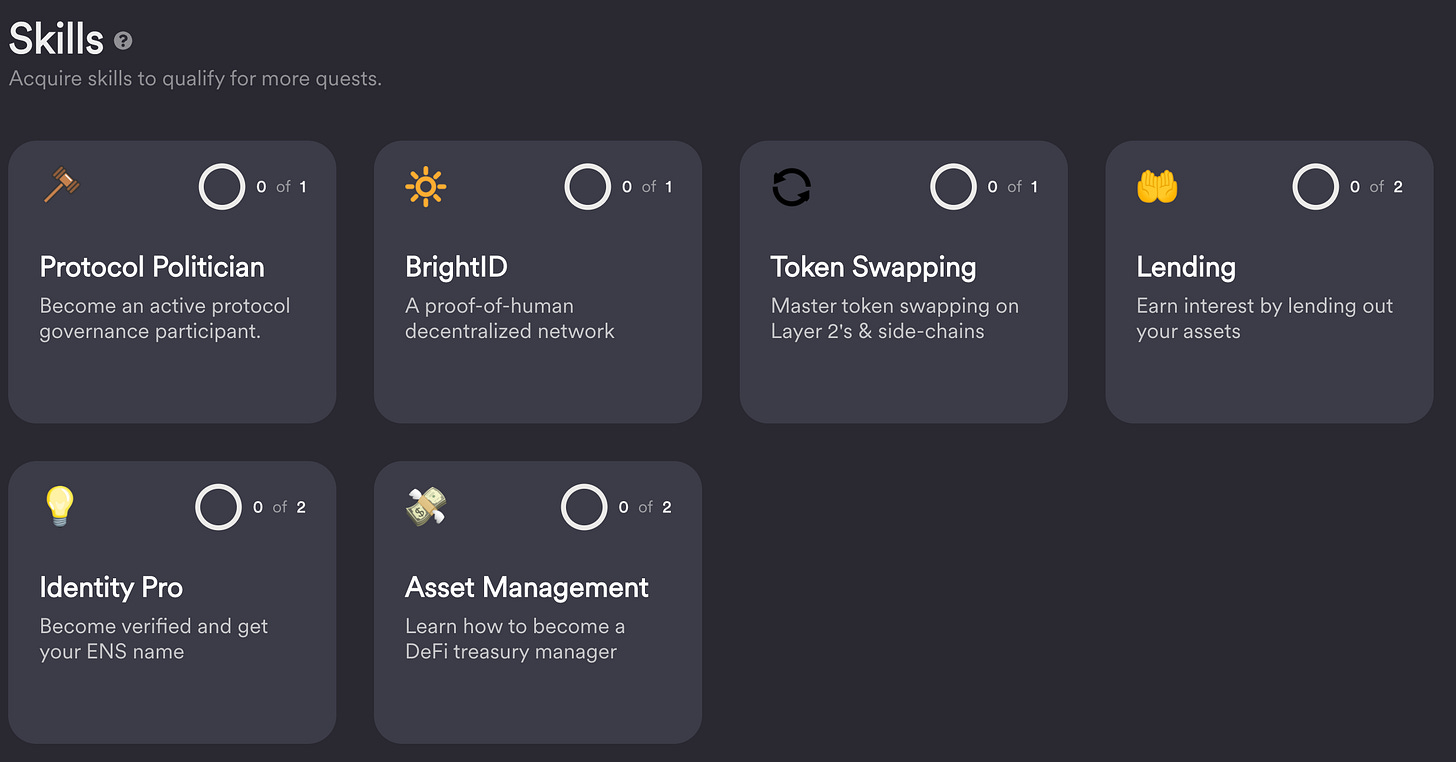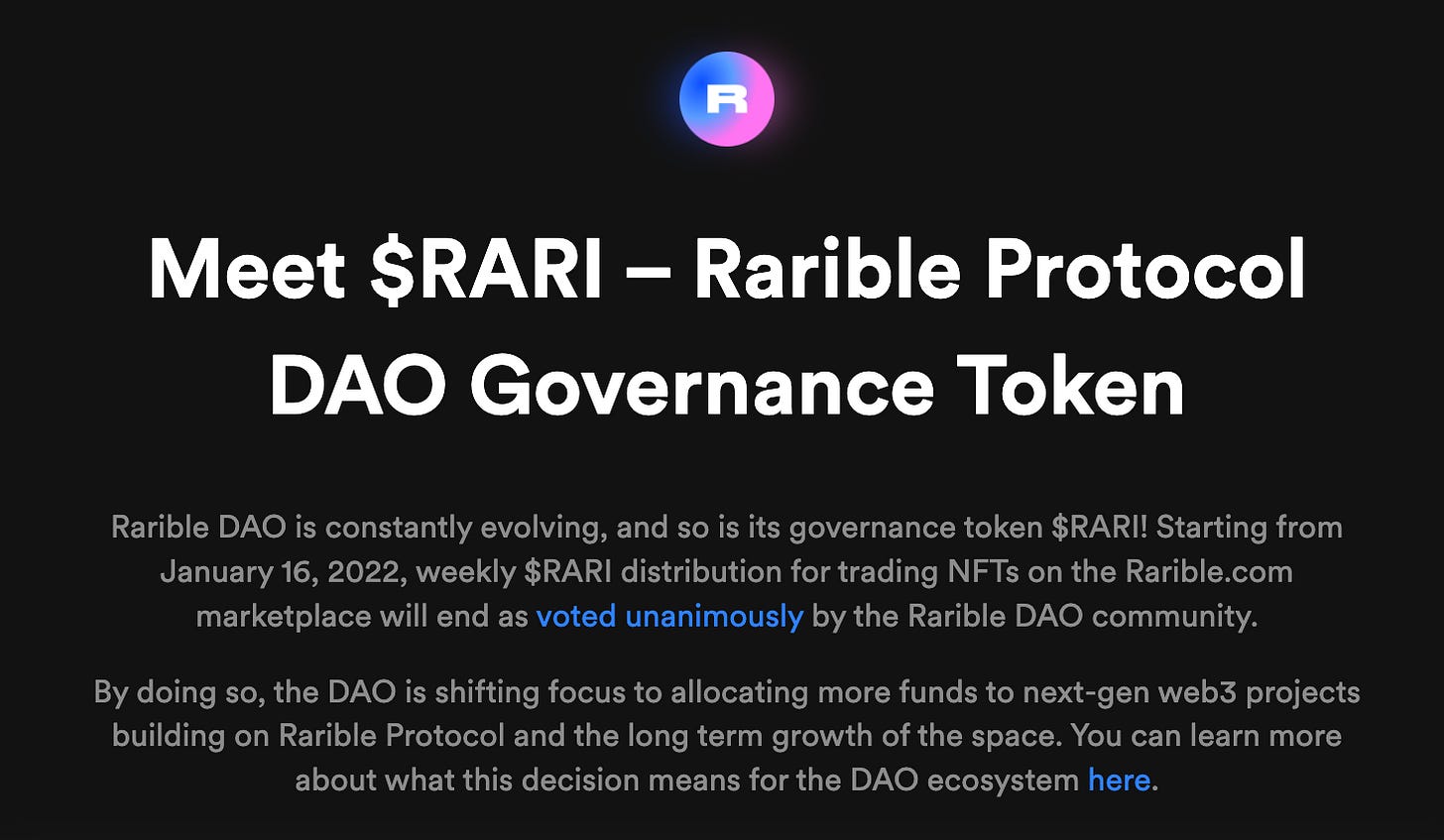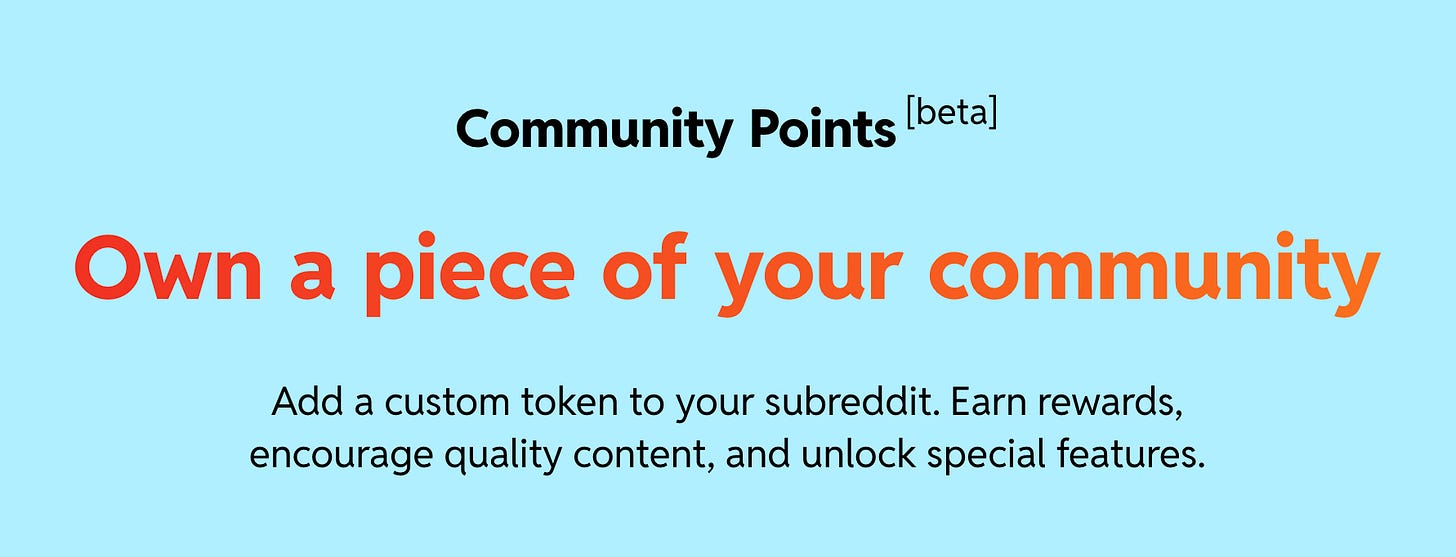Welcome to this week’s deep-dive. We’re going to talk about why rewarding contribution in web3 communities is important and how to design design reward models.
Tokens unlock community ownership
The beauty of web3 is that it allows your community to earn and govern. Tokens unlock the ability for your community members to buy in. The token allows members to do one or more of the following:
→ Earn a share of future earnings
→ Benefit from an increase in the price of the token, like a share
→ Contribute to the governance of the community
2 ways to earn tokens in a community
There are two ways to earn tokens in a community.
Buy a token
Web3 communities issue tokens for members to invest in the community. If you missed the initial token issue, you can buy tokens on the secondary market. I bought tokens in OdysseyDAO a community that intends to onboard 1 million people into web3.
Earn a token
Community members can and should also be rewarded for active contributions to the community. This is the novelty of web3 — you are incentivised to actively contribute to the community. In the example above, I write the weekly newsletter for Odyssey because I love writing, the community’s mission and want to contribute to growing OdysseyDAO.

I’ll focus on this for the rest of this essay.
Quantitative & qualitative signals to measure contributions
Measuring contribution in a community is hard. In a decentralised community, it’s important the community rewards are fair, transparent, equitable and decentralised. The most rudimentary approach is to use objective, quantitative signals. For example, the number of posts, replies or comments that a user contributes. If your community uses a product like Discord for communication, this sounds pretty easy. However, this incentivises quantity over quality. If your community grows, you are going to receive a bunch of spam. A community must leverage qualitative signals to reward contributions, but these hard to measure.
The most common models to reward contribution
Using consensus
The award for an individual is based on the consensus of the entire community or a subset. On a periodic basis, members may be proposed for compensation and the community votes using a tool like Tally or Snapshot.
BanklesssDAO used a Snapshot vote to agree on compensation for its grants committee.
Bounties or targets
Members can be rewarded based on the completion of an action.
Rabbithole is a learning DAO that is trying to onboard people into web3. They reward members for acquiring skills and completing quests. This is an interesting approach because it is objective, but requires effort, i.e. I can’t just shoot messages on their discord and expect rewards.
In the example below, bounties and targets are individualistic, but the same model can be applied for community benefit (write an essay to educate the community about X).
Usage based
Users are rewarded for using the product or service.
Rarible issues tokens to reward members for sales of NFTs on the platform. But this has led to wash trading. I set up two wallets and trade NFTs between them to earn $RARI. As long as the price of RARI is higher than the gas fees for trading, I can make a handsome profit.
This benefits the community because of network effects. More users selling = more users buying.
Community driven
Contributors are rewarded using signals from the community.
Reddit has done this for many years in web2, and is now going web3 by allowing subredditors to add a custom token. Content creators and moderators are rewarded for contributions. Reddit can do this because they’ve spent years thinking about and solving the spam problem.
To summarise:
Community members should earn based on contribution.
Contribution can be rewarded one of the following ways:
Consensus: a group decides who gets what.
Bounties or targets: get X by completing Y.
Usage: use the platform to get X.
Community based: get rewarded based on community feedback.








